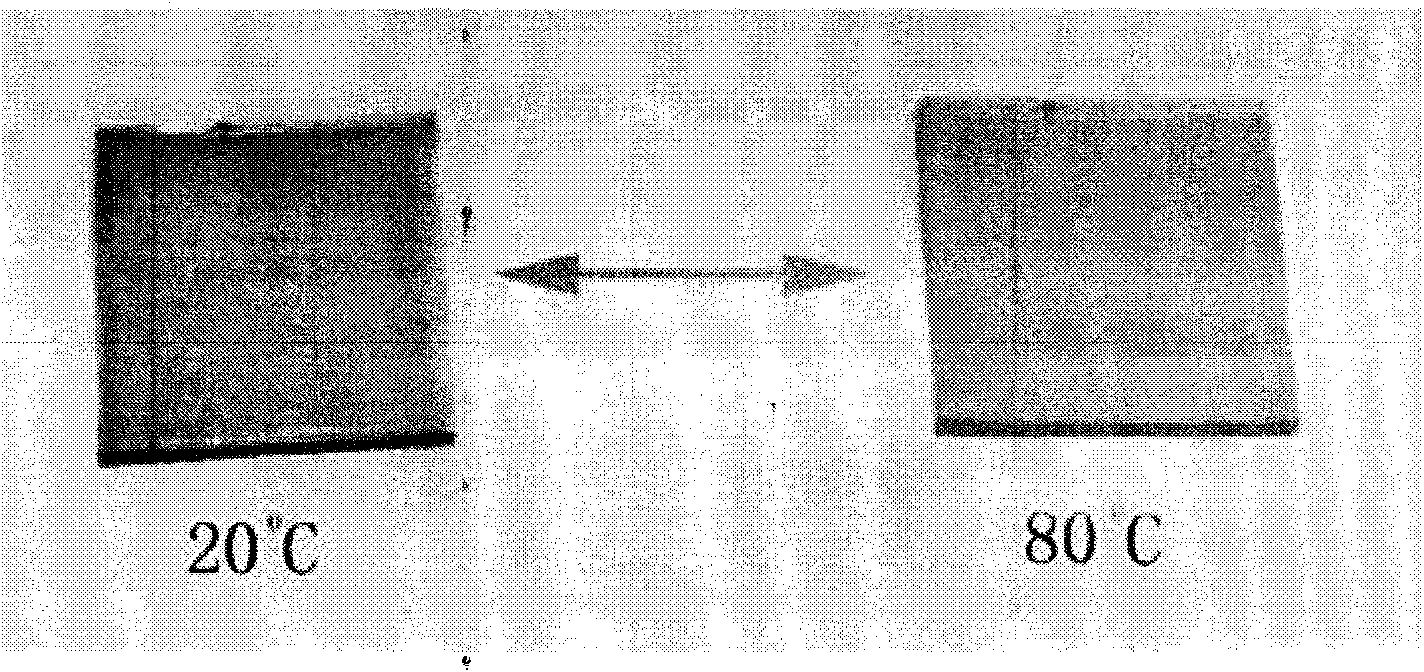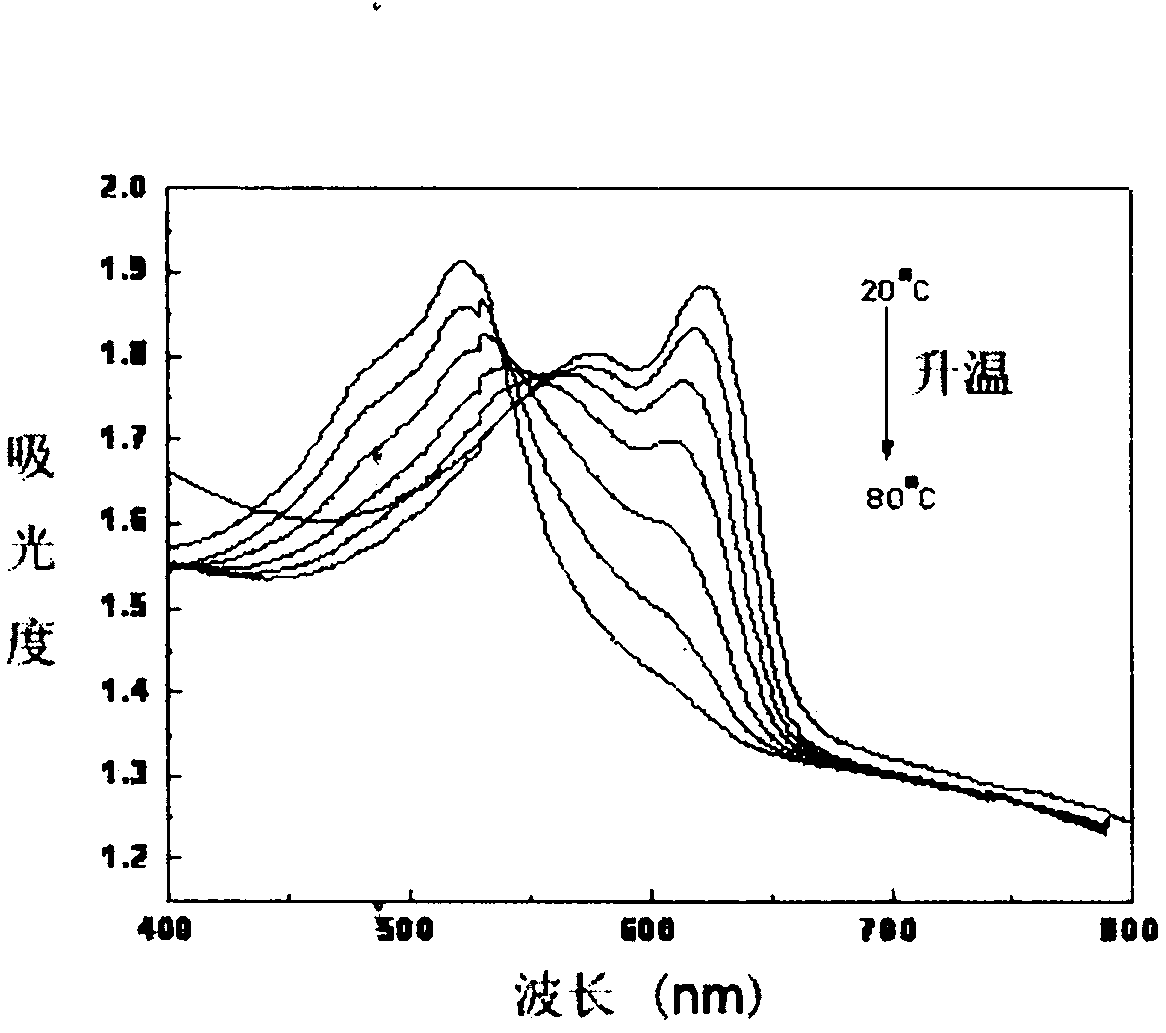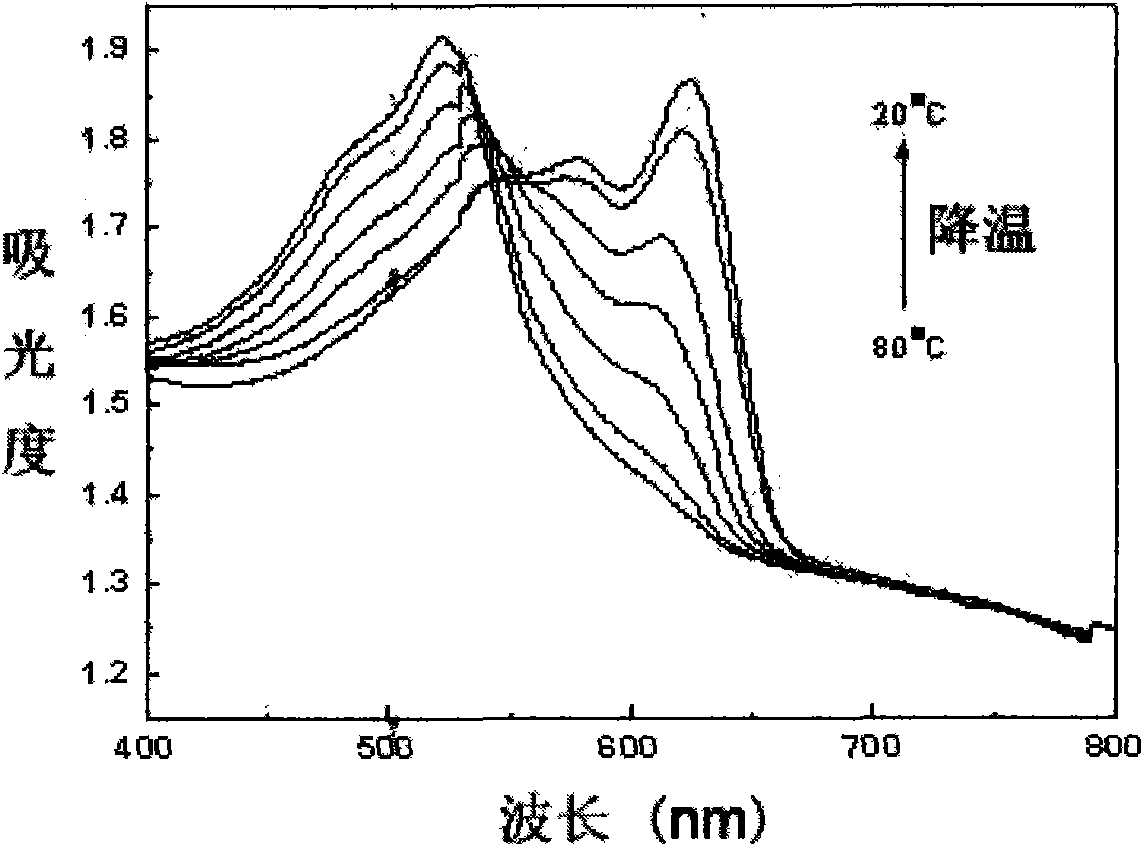Preparation method of thermochromism sensing materials
A sensing material and thermochromic technology, applied in the direction of color-changing fluorescent materials, chemical instruments and methods, etc., can solve the problems of unfavorable detection, complicated operation, inconvenient carrying, etc., and achieve the effect of low cost and simple preparation
- Summary
- Abstract
- Description
- Claims
- Application Information
AI Technical Summary
Problems solved by technology
Method used
Image
Examples
Embodiment 1
[0035] Preparation of polydimethylsiloxane / glutamic acid-based polydiacetylene thermally induced reversible color solid-state sensing material
[0036] (1) Synthesis of glutamate-diacetylene molecule
[0037] Reference (Cheng Quan et al., Langmuir, 2000, Vol. 16, p. 5334, Langmuir, 1998, Vol. 14, p. 1974) for the synthesis of glutamate-based diacetylene molecules, the specific method includes the following steps:
[0038] 1) Add 0.34g 10,12-Twenty-pentadecyethynoic acid [CH 3 -(CH 2 ) 11 -C≡C-C≡C-(CH 2 ) 8 -COOH] was dissolved in 20mL of dichloromethane, and then 0.14g of N-hydroxysuccinimide, 0.23g of 1-(3-dimethylaminopropyl)-3-ethylcarbodiimide hydrochloride were added in sequence, The reaction was stirred at room temperature (300 revolutions / min) for 12 hours. The mixed solution was concentrated on a rotary evaporator, and then 20 mL of ethyl acetate was added and extracted with water. The obtained organic phase uses anhydrous Na 2 SO 4 Dry for 12 hours and evaporate to dryness...
Embodiment 2
[0047] Preparation of Thermochromic Solid State Sensing Material of Polydimethylsiloxane / Dipentanoylic Acid Polydiacetylene
[0048] 1) Dissolve pentadecynoic acid diacetylene in chloroform to obtain a 1 mM solution; take 2.14 mL of the above solution, mix 1.5 g polydimethylsiloxane, and 0.1 g curing agent to obtain a mixture solution, and then remove the mixture under reduced pressure After the chloroform in the solution, the mixture is cured at 30°C for 24 hours, and the cured product is irradiated under a 254nm ultraviolet lamp for 5 seconds to polymerize the polydiacetylene of pentadecynoic acid to form a blue color. The thermochromic solid-state sensing material;
[0049] 2) The thermochromic solid-state sensing material obtained in step 1) is heated from 20°C to 80°C, and then cooled from 80°C to 20°C. The color of the thermochromic solid-state sensing material gradually changes from blue to purple and then to red during the heating process, and the color remains red during ...
Embodiment 3
[0051] Preparation of polydimethylsiloxane / glutamic acid-based polydiacetylene thermally induced reversible color liquid sensing material
[0052] (1) Synthesis of aminodiacetylene molecules
[0053] References (Richard E. Bruehl et al., Biochemistry, 2001, Vol. 40, page 5964) in the synthesis of aminodiacetylene molecules, the specific method includes the following steps:
[0054] 1) Put 10mL 2.4mmol / L C 6 H 11 N=C=NC 6 H 11 The dichloromethane solution was added to 10mL2.45mmol / L 10,12-pentadecyldiynoic acid [CH 3 -(CH 2 ) 11 -C≡C-C≡C-(CH 2 ) 8 -COOH] in dichloromethane solution, stirring (300 revolutions / min) at room temperature for 1 hour to obtain a mixed solution;
[0055] 2) Add the mixed solution obtained in step 1) dropwise to 10 mL of 4 mmol / L ethylenediamine in dichloromethane solution within 20 minutes, and continue to stir (300 revolutions / min) for 1 hour;
[0056] 3) Dilute and filter the reaction solution obtained in step 2) with 20 mL of petroleum ether, and evaporate th...
PUM
 Login to View More
Login to View More Abstract
Description
Claims
Application Information
 Login to View More
Login to View More - R&D
- Intellectual Property
- Life Sciences
- Materials
- Tech Scout
- Unparalleled Data Quality
- Higher Quality Content
- 60% Fewer Hallucinations
Browse by: Latest US Patents, China's latest patents, Technical Efficacy Thesaurus, Application Domain, Technology Topic, Popular Technical Reports.
© 2025 PatSnap. All rights reserved.Legal|Privacy policy|Modern Slavery Act Transparency Statement|Sitemap|About US| Contact US: help@patsnap.com



